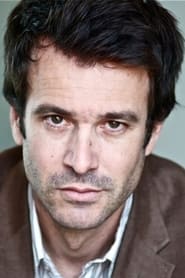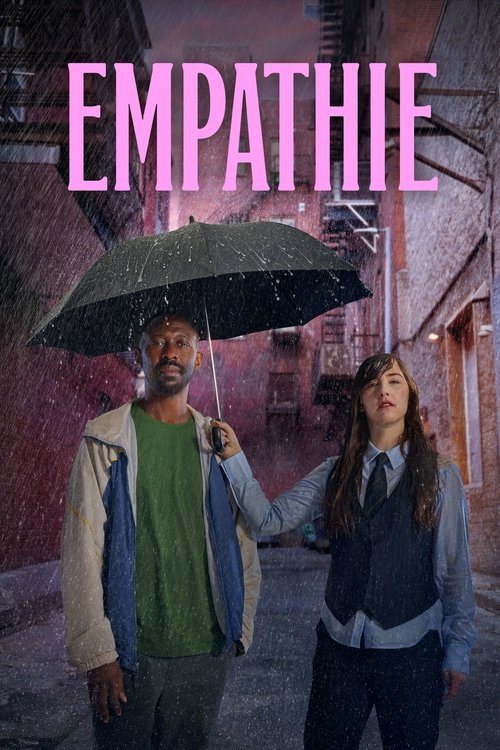
Ask Your Own Question
What is the plot?
In 1995, Lidia Achour, a young and ambitious anti-terrorism recruit, is sent to the small town of Peranne to investigate the brutal murder of an imam who was found scalped. She is partnered with Jean Benefro, a disillusioned local gendarme haunted by his traumatic memories from the Algerian War. Their initial investigation involves interviewing locals, gathering evidence at the crime scene, and trying to understand the motive behind the gruesome killing. Jean's experience and knowledge of the town's undercurrents contrast with Lidia's fresh but determined approach. They uncover tensions rooted in the town's colonial past and systemic racism, which complicate their work.
As Lidia and Jean dig deeper, they discover that the imam's murder is not an isolated incident but connected to a series of unresolved conflicts and hidden resentments dating back to the Algerian War. Jean's personal history becomes increasingly relevant as he confronts his own suppressed memories and guilt. The investigation reveals that some town residents are unwilling to confront the past, and others actively conceal truths to protect themselves or their families. Lidia faces resistance from local authorities and community members, but she persists, driven by her commitment to justice and her ambition.
Twenty-five years later, in 2020, the story shifts to the present day. The former mayor of Peranne is found murdered in a manner eerily similar to the imam's killing from 1995, with the same brutal scalping. This new crime shocks the town and reignites old wounds. Lidia, now at the peak of a seemingly impeccable career, returns to Peranne to investigate the murder. She is also searching for Jean, who has mysteriously disappeared without a trace. The disappearance of Jean and the murder of the former mayor suggest that the past is resurfacing in dangerous ways.
Lidia's investigation in 2020 involves revisiting old evidence, interviewing new witnesses, and confronting the town's entrenched secrets. She uncovers a web of corruption, betrayal, and unresolved trauma that links the two murders across decades. The investigation reveals that the former mayor had been involved in covering up past crimes and had enemies who wanted to silence him. Lidia's pursuit of the truth puts her at odds with powerful figures who want to keep the past buried.
Throughout the series, Lidia struggles with the emotional toll of reopening painful memories and the moral complexities of justice. Jean's disappearance is gradually explained as connected to his desire to protect Lidia and confront his own demons. The series culminates in a tense confrontation where Lidia exposes the truth behind the murders and the town's dark history. The final scenes reveal the full extent of the legacy of the Algerian War on Peranne's present, showing how historical trauma continues to shape lives and communities.
The narrative alternates between the two time periods, 1995 and 2020, to show how past events influence the present, with detailed sequences of investigation, personal reflection, and confrontations. The series ends with the resolution of the murder cases and Jean's fate, leaving a lasting impact on Lidia and the town of Peranne.
What is the ending?
At the end of Cimetière indien (2025), Lidia Achour uncovers the truth behind the gruesome murders and the disappearance of her former partner, Jean Benefro. The painful legacy of the Algerian war and buried secrets from the past come to light, resolving the mystery but leaving emotional scars. Jean's fate is revealed, and Lidia confronts the ghosts of history that continue to haunt Peranne.
The ending unfolds scene by scene as follows:
The final episodes open with Lidia Achour returning to Peranne, driven by the disappearance of Jean Benefro, her former partner and a gendarme haunted by his past. The town is gripped by a series of brutal murders, each victim found scalped in a manner reminiscent of a murder from 1995, linking the present crimes to the unresolved traumas of the past.
Lidia begins her investigation by revisiting old crime scenes and interviewing townspeople, uncovering layers of systemic racism and the long shadow cast by the Algerian war. She discovers that Jean had been secretly investigating these connections before vanishing, suggesting his disappearance is tied to the same dark forces behind the murders.
In a tense scene, Lidia finds Jean hidden in a remote location, physically weakened but mentally resolute. Jean reveals that he had been protecting a secret about the town's complicity in covering up war crimes and racial violence. His disappearance was a desperate attempt to shield Lidia and others from retaliation by those who want the past to remain buried.
As Lidia and Jean piece together the truth, they confront the murderer--a figure motivated by a desire to expose the town's historical sins through violent retribution. The confrontation is fraught with emotional intensity, as the killer's actions force Lidia and Jean to face their own trauma and guilt.
Jean sacrifices himself to save Lidia during the final confrontation, dying as a symbol of the cost of confronting buried history. Lidia survives, deeply changed, and resolves to bring justice and acknowledgment to the victims of both past and present crimes.
The series closes with Lidia standing at the site of the original "Indian cemetery," a metaphor for the repressed history of colonial violence and its ongoing impact. She reflects on the necessity of remembering and reckoning with the past to prevent future cycles of violence.
Thus, the fates of the main characters at the end are: Jean Benefro dies heroically after revealing the truth and protecting Lidia; Lidia Achour survives, burdened but determined to continue seeking justice; the murderer is stopped, and the town of Peranne is forced to confront its painful legacy. The ending emphasizes the enduring presence of historical trauma and the difficult but necessary process of facing it.
Is there a post-credit scene?
The TV show Cimetière indien (2025) does not have any publicly documented post-credit scene. Available sources, including detailed series descriptions and reviews, do not mention or describe any post-credit or mid-credit scenes for this crime thriller series.
The show focuses on a dual timeline investigation involving gruesome murders linked to historical trauma, but no information indicates an additional scene after the credits that would extend or hint at further plot developments.
What motivates Lidia Achour's relentless investigation into the murders in Cimetière indien?
Lidia Achour is driven by the disappearance of her former partner, Jean Benefro, and a series of gruesome murders that push her to investigate relentlessly, despite the risk of awakening a painful past that everyone thought was buried. Her ambition as a young anti-terrorism recruit and her personal connection to Jean fuel her determination.
How does Jean Benefro's past influence his character and actions in the series?
Jean Benefro is a disillusioned gendarme haunted by his memories of the Algerian war. His traumatic past deeply affects his outlook and behavior, contributing to his mysterious disappearance 25 years after the initial investigation, which becomes a key plot element driving the story forward.
What is the significance of the two time periods, 1995 and 2020, in the narrative structure of Cimetière indien?
The series alternates between 1995 and 2020 to show how past events, including the initial murder investigation and the legacy of the Algerian war, influence the present-day murders and disappearances. This dual timeline reveals the resurfacing of historical trauma and unresolved issues that connect the two eras.
What is the connection between the murder of the imam in 1995 and the murder of the former mayor of Peranne in 2020?
Both murders share a gruesome similarity: the victims were found scalped. The murder of the imam in 1995 and the former mayor's murder 25 years later suggest that the past violence and unresolved conflicts are reemerging, linking the two cases and driving the investigation.
How does systemic racism and the legacy of the Algerian war manifest in the characters and plot of Cimetière indien?
The series explores systemic racism and the legacy of the Algerian war through its characters, especially Jean Benefro, who is haunted by his war memories, and Lidia Achour, whose investigation uncovers the deep-seated historical trauma affecting the community. These themes are central to the plot, influencing character motivations and the unfolding of the murders.
Is this family friendly?
The TV show Cimetière indien (2025) is not family friendly. It is a crime thriller involving gruesome murders, including scenes of scalping and violence, which can be disturbing for children and sensitive viewers. The series also deals with heavy themes such as the legacy of the Algerian war, systemic racism, and historical trauma, which may be emotionally intense or upsetting.
Potentially objectionable or upsetting aspects include:
- Graphic and violent murder scenes, described as gruesome and involving scalping.
- Dark and intense themes related to war trauma and racism.
- Psychological tension and suspense typical of crime dramas.
- Emotional distress linked to the resurfacing of painful past events.
Because of these elements, the show is more suitable for mature audiences and may not be appropriate for children or viewers sensitive to violence and heavy social issues.

































